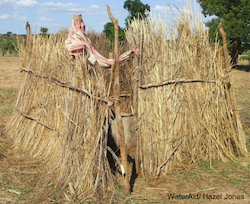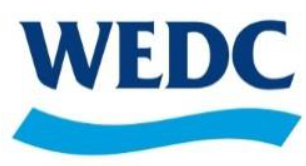Accessible - Superstructure
| Suitable for: People with mobility impairments. |
| Construction |
Advantages |
Disadvantages |
Improvements / variations |
Cost / labour |
| Grass walls attached to wooden poles; no roof; curtain for privacy |
|
|
|
Low |
| Plastic sheeting for walls attached to wooden poles, woven mat for curtain, no roof |
|
|
Plastic roof could be added | Low |
| Rammed earth structure with thatched roof |
|
Difficult to allow enough light in without reducing privacy |
|
Medium to high |




